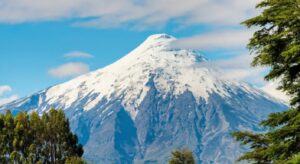 As glaciers and ice sheets melt due to rising global temperatures, the immense pressure they once exerted on underground magma chambers begins to ease—triggering decompression and allowing magma and volcanic gases to expand. This process was documented in a new study focusing on six volcanoes in Chile’s Andes, which showed that melting glaciers around 10,000–18,000 years ago led to more frequent and explosive eruptions as the ice retreated. The implication is global: roughly 245 potentially active volcanoes lie beneath or near glacial ice, including hundreds in Antarctica, North America, Russia, and New Zealand. While short-term eruptions may cause temporary global cooling, the long-term release of greenhouse gases like CO₂ can create a positive feedback loop—where melting glaciers spark eruptions that, in turn, accelerate further warming and ice melt. As glaciers and ice sheets melt due to rising global temperatures, the immense pressure they once exerted on underground magma chambers begins to ease—triggering decompression and allowing magma and volcanic gases to expand. This process was documented in a new study focusing on six volcanoes in Chile’s Andes, which showed that melting glaciers around 10,000–18,000 years ago led to more frequent and explosive eruptions as the ice retreated. The implication is global: roughly 245 potentially active volcanoes lie beneath or near glacial ice, including hundreds in Antarctica, North America, Russia, and New Zealand. While short-term eruptions may cause temporary global cooling, the long-term release of greenhouse gases like CO₂ can create a positive feedback loop—where melting glaciers spark eruptions that, in turn, accelerate further warming and ice melt.
Source: Earth.Com |